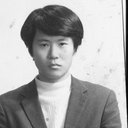β-Sitosteryl (6'-O-linoleoyl)-glucoside of soybean (Glycine max L.) crude extract inhibits Y-family DNA polymerases.
Nøgleord
Abstrakt
In the screening of selective DNA polymerase (pol) inhibitors, we isolated an acylated steryl glycoside, β-sitosteryl (6'-O-linoleoyl)-glucoside (compound 1), from the waste extract of soybean (Glycine max L.) oil. This compound exhibited a marked ability to inhibit the activities of eukaryotic Y-family pols (pols η, ι and κ), which are repair-related pols. Among mammalian Y-family pols, the activity of mouse pol κ was most strongly inhibited by compound 1, with an IC(50) value of 10.2 µM. On the other hand, compound 1 had no effect on the activities of other eukaryotic pols such as A-family (pol γ), B-family (pols α, δ, and ε), or X-family (pols β, λ and terminal deoxynucleotidyl transferase) pols. In addition, compound 1 had no effect on prokaryotic pols or other DNA metabolic enzymes such as calf primase of pol α, T7 RNA polymerase, T4 polynucleotide kinase, or bovine deoxyribonuclease I. Compound 1 consists of 3 groups: β-sitosteryl (compound 2), linoleic acid (compound 3), and D-glucose (compound 4). Compound 3 inhibited the activities of all mammalian pols tested, but compounds 2 and 4 did not have any effect on the tested pols. Kinetic studies showed that the inhibition of pol κ activity by compound 1 was noncompetitive with both the DNA template-primer and nucleotide substrate, whereas compound 3-induced inhibition was competitive with the DNA template-primer and noncompetitive with the nucleotide substrate. The relationship between the structure of compound 1 and the selective inhibition of eukaryotic Y-family pols is discussed.


